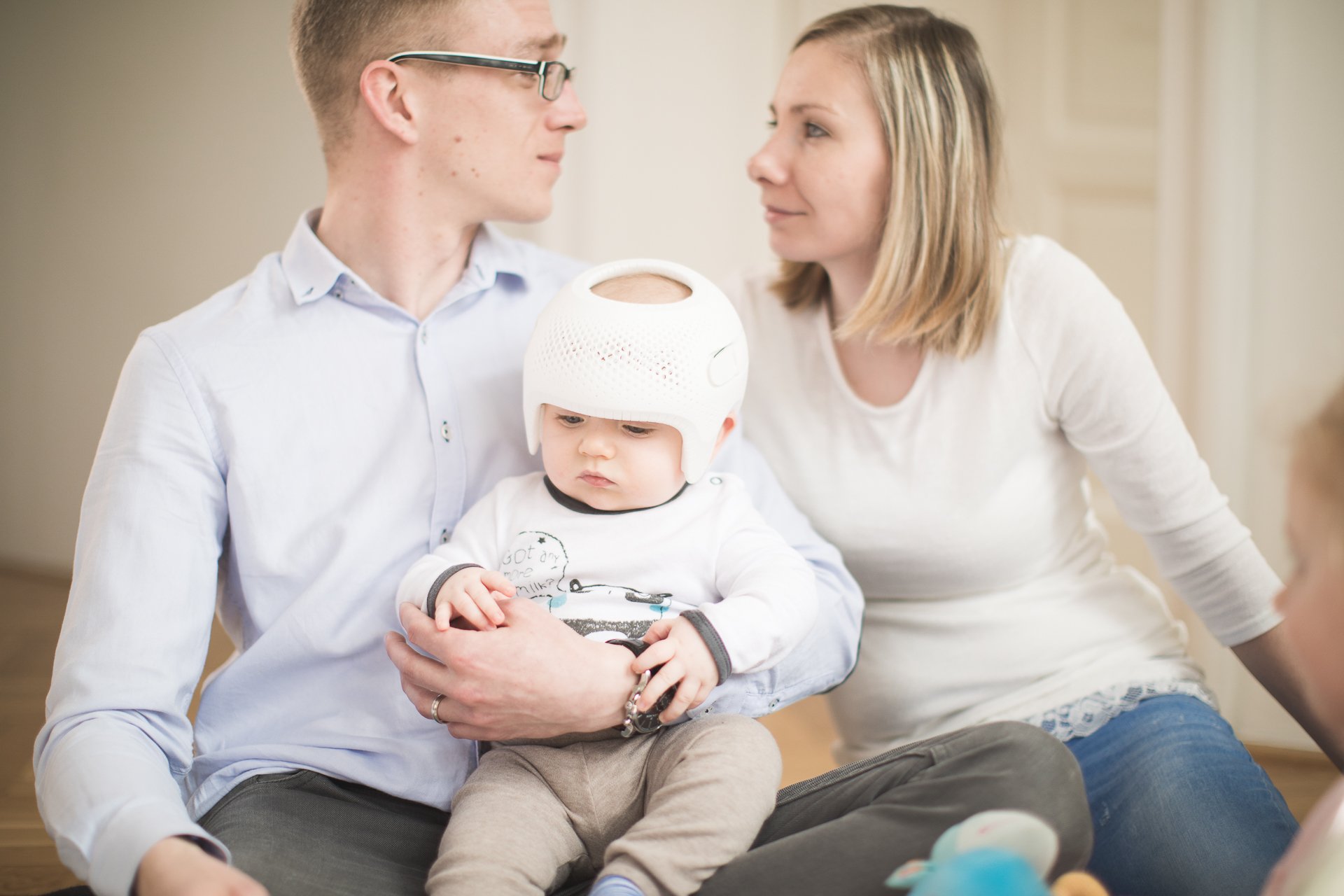How can I tell my baby needs treatment?
Knowing that your baby’s head may not be perfectly symmetrical can be a cause of anxiety for parents. This is especially so if you are not able to tell how severe the condition is, and how it will develop.
In this post, we explain the forms of cranial asymmetries, and when to seek further medical advice
How common are head deformities?
The vast majority of cranial deformities occur as a result of external forces to the malleable skulls of babies, such as flattening from sleeping on the same side or pressure in the womb (Post - What you need to know about flat head syndrome)
Babies experience amazing rates of development, and many outgrow cranial deformities. It is estimated that 40% of newborns are affected by cranial asymmetry Thankfully, most babies outgrow this, with only 10% of babies having moderate to severe asymmetries by 6 months of age.
When can I start helmet treatment?
Babies 1 to 4 months old are too young for cranial remoulding therapy (or baby helmets) as they are usually still not able to support the weight of their own heads. Their skulls are also still developing and there are huge opportunities for self-improvements. According to the World Health Organization (WHO), a baby’s head circumference grows by ~70mm in the first four months of life!
This is why we at Sano recommend conservative measures for young babies, such as supervised tummy time when awake.
If those measures fail to correct the head shape by 4 to 6 months, it could be time to consider helmet therapy. It is recommended to seek an opinion early, as the older the baby gets, the rate of head growth reduces and the skull starts to become less malleable. As a result, the treatment duration would be longer to correct the baby’s head shape.
Assessing the severity
At the clinic, the shape of the baby’s head is assessed across two dimensions using five measurements. First, the Cranial Index (CI) measures the ratio of the head’s width and length, compared against normal cranial proportions. Second, the Cranial Vault Asymmetry Index (CVAI) measures two diagonals across the head from the corner of the forehead to the opposite diagonal corner. Comparison of the diagonal measurements determines the degree of asymmetry of each side.
A final measurement is the circumference of the head. A total of five measurements!
Paired with the infant’s age and motor development milestones, the measurements provide sufficient information to make a recommendation on treatment.
If a parent decides to proceed with helmet therapy, we will take a full head scan of the baby to have digital 3D data of the shape of the baby’s head. This is a precise scan, and will allow Sano to provide the necessary treatments through software design and modifications.
Let us help
Not sure if your baby is suffering from cranial asymmetry? Contact us for an assessment.





